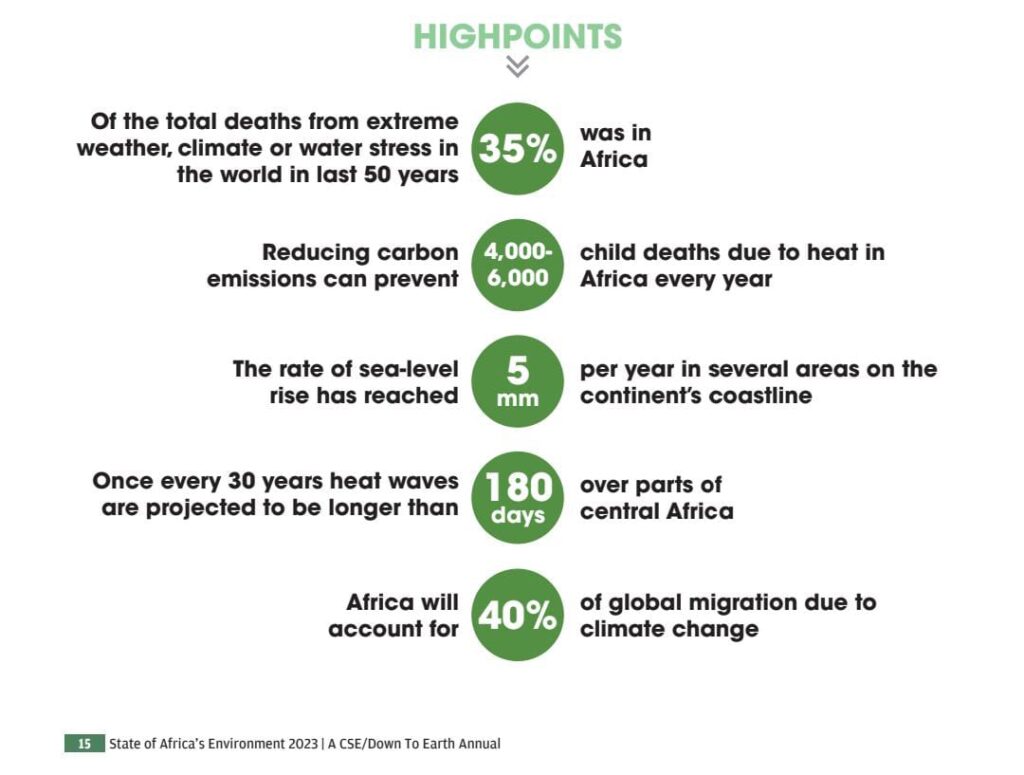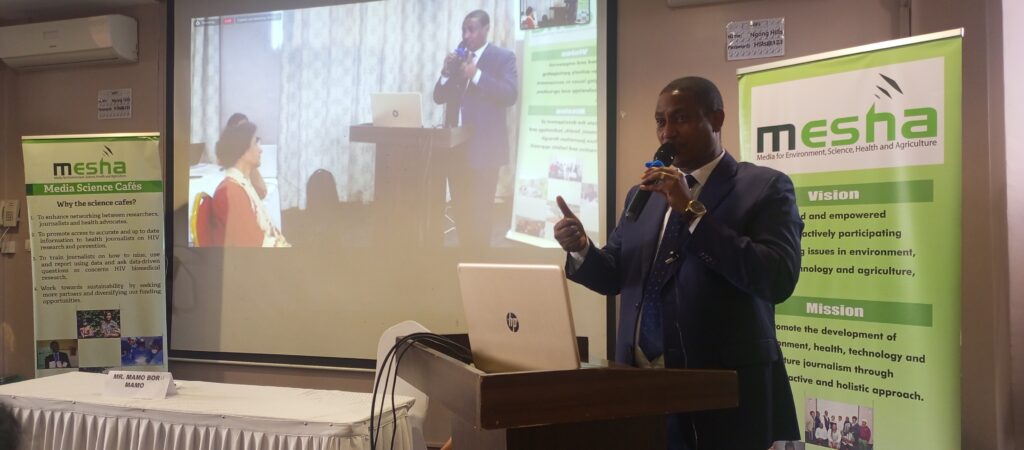Kenya has featured prominently in a report which has painted a grim picture of Africa state of environment.
The report titled ‘State of Africa’s Environment Report 2023’ analysed critical areas of environment in the continent, including; Climate, Biodiversity, Land and Agriculture, Mobility, Energy, Health, Water and Waste.
The report was released during the 2023 African Science Journalists’ Congress held in Nairobi between October 11 to 13, and hosted by Media for Science, Health and Agriculture (MESHA).
MESHA is an association of journalists and communicators who are specialized in environmental, agriculture, health, technology and development reporting.
According to the report from a study conducted by the India-based Centre for Science and Environment (CSE) and Down to Earth Magazine, Africa remains extremely vulnerable to, and bears the brunt of drought, flooding, cyclones and other climate change-led weather events.
The report notes that globally, one in every three deaths from extreme weather, climate or water stress in the last 50 years was in Africa.

Long droughts
Kenya and its East African partners, according to the report, had by end of 2022 recorded five consecutive deficit rainy seasons.
The report pointed out that the exceptional weather situation was attributed to La Niña, a natural large-scale cooling of ocean surface temperature in the central and eastern equatorial Pacific Ocean, which causes dry weather and high temperatures in East Africa.
While many factors continue to influence climate, the report noted that scientists partly blame human activities for having become the dominant force responsible for most of the warming observed over the past 50 years.
Wild animals now roam here freely. You can hardly walk a kilometre before seeing one or two. I just survived an elephant attack a week ago and have lost livestock to wild animals
David Leiyan
As captured in the report, Human-Wildlife Conflicts are reported to have escalated as impacts of Climate Change ravage the area, with Kenya adversely mentioned as a victim.
David Leiyan, a 41-year-old local from Samburu East in northern Kenya, is quoted by the report describing the sad state of affairs in the area.
“Wild animals now roam here freely. You can hardly walk a kilometre before seeing one or two. I just survived an elephant attack a week ago and have lost livestock to wild animals,” Leiyan is quoted in the report.
The report also records that cases of lions or leopards wandering into residential areas in Nairobi and counties around protected areas like Nairobi National Park or Tsavo National Park have become common, with experts citing a lack of enough food and water in the wild for animals courtesy of biting drought.
African Perspective
Sunita Narain, the CSE Director General noted that the report shares Africa’s perspectives of environment which has been missing in many forums.
She noted that African countries have continued to experience extreme weather events such as drought, floods, cold, and pest attacks among others, hindering people’s ability to cope.
These phenomena have not only impacted on the lives of people but also biodiversity.
“Environment and development are two sides of a coin, and this report links the two,” she said during the launch of the report.
“The African climate is a natural incubator of many tropical diseases, such as malaria, cholera, Rift Valley Fever (RVF), meningitis, yellow fever, dengue and chikungunya. These diseases are caused by pathogens that are temperature sensitive. It is predicted that the frequency of these anomalous events will increase as the planet becomes warmer,” read the report.

Kenya’s National Environmental Management Authority (NEMA) Director General Mamo Bor Mamo who presided over the launch of the report said its content will be domesticated to help the country with strategies to deal with Climate Change.
He noted that despite Kenya having a pro-conservation constitution supported by eight other regulations, the biggest challenge to dealing with conservation issues has been enforcement.
“This report is very timely and will build into NEMA report and policies,” said Mamo.
MESHA CEO Daniel Agan underscored the need for collaboration between stakeholders in the climate sector and the media so as to promote knowledge sharing for maximum impact on the people.
“Our collaboration with CSE and other partners have seen improved quality and intensity in the coverage of science-related stories, for example the concepts covered in this report,” he said.
Head of Down to Earth Magazine Richard Mahapatra said the report was a contribution of journalists and experts.
